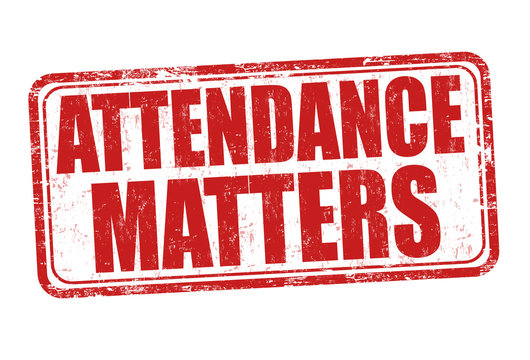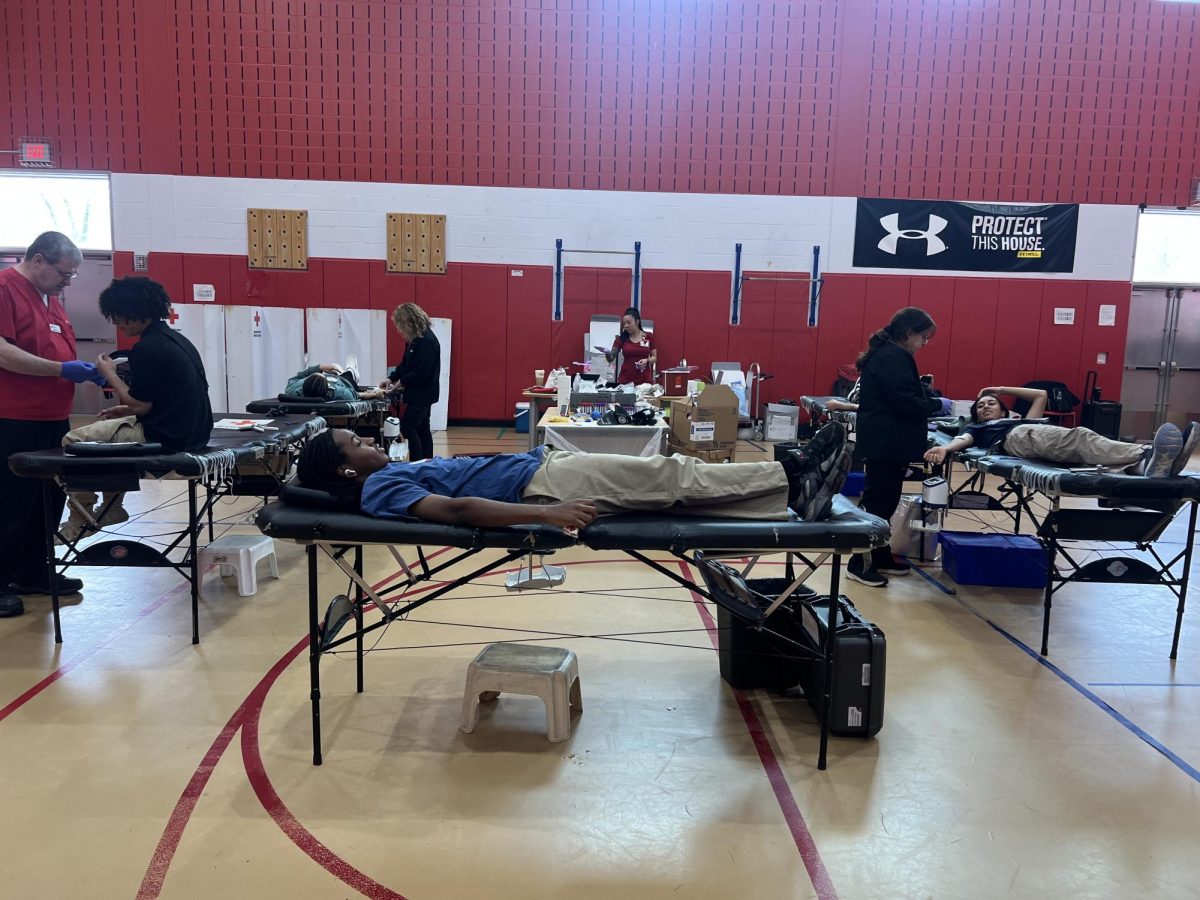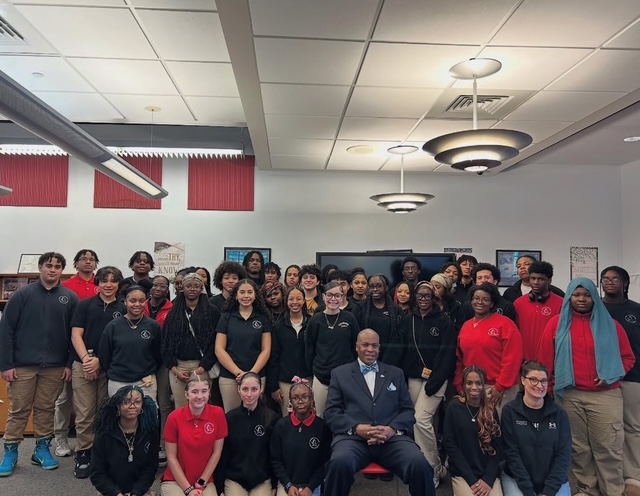Chronic Absenteeism is a very important issue for schools throughout the country. Hartford Public Schools takes a very hands on approach when it comes to the issue. “We define chronic absenteeism like the State Department of Education defines chronic absenteeism which is defined as any student that is missing 10% or more of the school year. When you think about that from a mathematical standpoint that number would shift, because we have 180 days that are by law required, 10% of that is 18 absences.” said Hartford Public Schools Superintendent Dr. Leslie Torres-Rodriguez. “So at the end of the year, if a student missed 18 days or more they are considered chronically absent. An acceptable attendance rate is hard to quantify, because when I think about the root causes or the underlying issues of why students might be chronically absent so many of those are variable by given the family’s circumstances, the student’s circumstances, their needs, the experience that they are having in school, and so I don’t know that there is an acceptable attendance rate but I would say one that is reflective of the supports that have been put in place to help that student.”
Chronic Absenteeism is a symptom of things that are not serving the student. In terms of strategies and/or interventions that the district has in place to address chronic absenteeism, Dr. Torres-Rodriguez said that they have systems and structures, and so they have Attendance Climate and Engagement (ACE) Teams, and they meet weekly to discuss not just what the data tells them, but also ways to connect with the students and to looking at the issue and doing something about it. Partnerships are also very important, such as partnerships with the social workers, family and community support providers, student engagement specialists, the school leadership teams. So partnerships internally, and partnerships with families and caregivers and partnerships with community based organizations, who sometimes need to help students who’s barrier for them coming to school is their social health and wellness. Sometimes it is that the student needs a check in check out strategy at school, sometimes it is that they need one to one social worker time, they may need to participate in afterschool enrichment. The student may be into esports because they have a connection to that. There are also incentive programs for all the students in the district to keep them engaged. One of the foundational moves to collaborate with parents and guardians, is to make sure that they understand what the district means by attendance and what they mean by chronic absenteeism. The other key term is average daily attendance which is very different from chronic absenteeism. One shows the average attendance from every single day, while the other one says that there is a real issue going on for the student. So it is really about making sure that families understand the definition and also the impact of chronic absenteeism. When they look at their data and they see that 20% of their kindergarteners and first graders are chronically absent, that shows that there is an issue going with the family because the five year old cannot get on the bus by themselves so the district has to support the student and see how they can get resources for the family, one thing that they found with some of those families is that they really didn’t think that the five year old missing school was a big deal. They also want families to know that the resources and support they have are available. When Dr. Torres-Rodriguez became superintendent; the district did not have ACE teams. She was also confident that if she went to four different schools and asked them to show her their ACE manuals and agendas that they are using the data and having the conversations which is a hard place to get to in a district that is so large and has so many schools. In terms of there being consequences for being chronically absent, the district wants students to come to school every day, but sometimes the student is absent due to factors that are out of their control. Sometimes the student could be excluded from an attendance field trip, but letting them go on the field trip may hook them back in and get them engaged. They know that if a student is chronically absent it will limit their ability to access instruction. By third grade, chances for students that are chronically absent are less likely to be reading on grade level, and it is also less likely for them to make it to high school on time, and if they do, they are less likely to graduate on time. That has been proven by data taken nationwide, and by a study that the district did that identified early warning indicators of students not persisting in college, they did a data study looking at students that were in their second year of college and their persistence. They tracked it back to elementary school and identified four warning indicators, meaning that if a student had any of these four indicators, they could predict that they would be off track in high school. Chronic absenteeism was one of them, if they got suspended one time either an in school or outside of school suspension, they had not met mastery on the state tests, all of these contributed to being off track. There is a process for identifying if the absence is excused or unexcused, but even if it is excused, the state still defines it as being absent from school. Some schools have school based health clinics which is very helpful because parents are told to bring the child to school and the school can provide the care right of way whereas the parent might have to bring the child to the doctor at ten o’clock in the morning. A nurse can also identify that a student is suffering from asthma, the district has a lot of students who suffer from asthma and their chronic absenteeism rate is higher than others every year. So they want to make sure that nurses have a partnership with either the primary care provider or the local health clinic if there is not a clinic in the school system. The state has very clear guidelines from the State Department of Education regarding when to notify a family that their student is considered chronically absent. How the notification is done, is entirely up to the district. They determine whether or not they do a robocall, a letter home, an email to everyone regarding getting their students to school everyday. The district also has done up to twenty one thousand home visits. Dr. Torres-Rodriguez has acknowledged that this may cause people anxiety, but she also acknowledged that they have a responsibility to try to understand the root causes of why the student is not in school regularly, and to try to help, and sometimes it is just connecting a family to resources outside of school.
UHSSE has done multiple home visits this year, and ensures that they are done respectfully. “We go to the student’s house, knock on their door, see if their parents are there and if they are there we will tell them how many times their child has been absent and if it’s behavioral we will tell them that if their kid gets suspended again they may have to face expulsion or go to another school,” said UHSSE behavioral technician Valerie Cintron. “If no one is home, we will leave a note saying that we showed up.” Sometimes the kids are at home, and sometimes if they aren’t sick they will be picked up and brought back to the school with the people who are doing the home visit. They also make sure that the environment is appropriate for the student.
UHSSE tracks and monitors student attendance through PowerSchool, and uses ParentSquare to send letters to families regarding attendance. “We have also created some incentives and attendance milestones, so instead of just reporting when a kid is chronically absent, we also report when they are trending in the right direction.” said UHSSE vice principal Jennifer Todisco. An example of this was the Lake Compounce field trip on Friday, May 31, 2024. They also did an ice skating field trip in January which was a smaller incentive but still fun. All absences count the same in terms of not being in school on a given day. When the school is looking at chronic absenteeism and the steps that they have to take that are outlined by the state. At a certain point if you don’t come to school it can be educational neglect.
Families are encouraged to seek help when they need it, from anyone in the school system who can provide it.


















